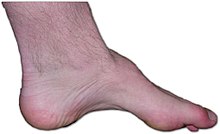The right running shoes are essential for every runner, whether you’re a casual jogger or training for a marathon. Properly fitted running shoes provide the support, cushioning, and stability your feet need to reduce the risk of injury. Ill-fitting shoes can lead to discomfort, blisters, and even long-term issues like joint pain. Investing in the right pair not only ensures comfort during your runs but also boosts your confidence to achieve your fitness goals.

In this guide, you’ll discover everything you need to know about running shoes to make an informed choice. From understanding different shoe types and foot arch styles to exploring key features like cushioning, support, and durability, this blog covers it all. Whether you’re running on roads, trails, or treadmills, you’ll learn how to find the perfect pair of running shoes tailored to your unique needs.
Choosing the right running shoes starts with understanding your unique needs, such as your foot type, running style, and preferred terrain. Factors like having flat feet, high arches, or a neutral foot shape can influence the level of support and cushioning you require.
Additionally, whether you’re a long-distance runner, a sprinter, or someone who enjoys trail running. By considering these personal factors, you’ll find a pair that fits perfectly and supports your running journey.
Understanding the Basics of Running Shoes
Running shoes are specifically designed to support the unique biomechanics of running. Unlike regular sneakers, they provide targeted cushioning, stability, and flexibility to handle the repetitive impact of each stride. Running shoes are built to absorb shock, protect your feet, and improve performance, making them an essential investment for runners of all levels. Whether you’re jogging casually or training for a marathon, the right pair of running shoes can make a significant difference in your comfort and safety.
Running shoes come in various types to suit different activities and surfaces. Road running shoes are lightweight and designed for paved surfaces, offering smooth cushioning and support. Trail running shoes, on the other hand, feature rugged soles and enhanced durability to handle uneven terrain and provide grip on trails. Cross-training shoes are versatile, catering to gym workouts and light running. Choosing the right type of running shoe depends on where and how you plan to run, ensuring optimal performance and comfort.
How to Identify Your Foot Type
Explanation of Foot Arch Types: Flat, Neutral, and High Arches
Your foot arch type plays a crucial role in determining the best running shoes for you. Flat arches, where the entire sole touches the ground, often need stability or motion control shoes to provide additional support. Neutral arches have a moderate curve and work well with most running shoes that offer balanced cushioning. High arches, which show a pronounced curve, typically require shoes with extra cushioning to absorb shock and provide comfort during runs.
Simple Tests to Determine Your Foot Type

A simple way to determine your foot type is through the wet foot test. Wet your feet and step onto a piece of paper or a flat surface that shows the outline of your footprint. If you see the entire sole, you likely have flat arches. If there’s a visible curve but not much of the middle section, you have neutral arches. A very narrow or disconnected arch area indicates high arches. This test is quick and effective in identifying your foot type.
Why Knowing Your Foot Type Matters When Selecting Running Shoes
Understanding your foot type is essential when choosing the right running shoes. Each arch type requires different levels of support and cushioning to ensure optimal performance and prevent injuries. For example, flat arches may need shoes with better stability to avoid overpronation, while high arches benefit from extra cushioning to reduce impact. Matching your shoes to your arch type enhances comfort and helps maintain proper alignment while running.
Take the Guesswork Out of Choosing Running Shoes
Explanation of Foot Arch Types: Flat, Neutral, and High Arches
Your foot arch type plays a crucial role in determining the best running shoes for you. Flat arches, where the entire sole touches the ground, often need stability or motion control shoes to provide additional support. Neutral arches have a moderate curve and work well with most running shoes that offer balanced cushioning. High arches, which show a pronounced curve, typically require shoes with extra cushioning to absorb shock and provide comfort during runs.

Simple Tests to Determine Your Foot Type
A simple way to determine your foot type is through the wet foot test. Wet your feet and step onto a piece of paper or a flat surface that shows the outline of your footprint. If you see the entire sole, you likely have flat arches. If there’s a visible curve but not much of the middle section, you have neutral arches. A very narrow or disconnected arch area indicates high arches. This test is quick and effective in identifying your foot type.
Why Knowing Your Foot Type Matters When Selecting Running Shoes
Understanding your foot type is essential when choosing the right running shoes. Each arch type requires different levels of support and cushioning to ensure optimal performance and prevent injuries. For example, flat arches may need shoes with better stability to avoid overpronation, while high arches benefit from extra cushioning to reduce impact. Matching your shoes to your arch type enhances comfort and helps maintain proper alignment while running.
Take the Guesswork Out of Choosing Running Shoes
By knowing your foot type and selecting the appropriate running shoes, you’ll not only improve your running experience but also protect yourself from common injuries like shin splints and plantar fasciitis. Take the time to identify your arch type and consult with a specialist if needed. A little effort upfront can make a big difference in finding the perfect pair of running shoes for your needs.
Neutral, Overpronation, and Underpronation
Gait analysis is a key step in choosing the right running shoes as it assesses how your feet move while running. Runners with neutral gait have balanced foot movement, making them suitable for most shoes. Overpronation, where the foot rolls inward excessively, requires stability shoes to control movement.
Underpronation (or supination), where the foot rolls outward, benefits from cushioned shoes to absorb impact. Understanding your gait ensures you select running shoes that provide proper support and reduce the risk of injury.
Factors to Consider: Distance, Terrain, and Running Frequency

When selecting running shoes, consider your running habits, including distance, terrain, and frequency. Long-distance runners need shoes with enhanced cushioning for comfort over extended periods, while short-distance or speed runners often prefer lightweight, responsive shoes. For trail running, durable shoes with rugged soles provide grip on uneven terrain, while road running shoes focus on smooth cushioning for paved surfaces. Knowing how often and where you run helps you find the perfect pair for your needs.
Invest in the Right Running Shoes for Success
Choosing the perfect running shoes tailored to your gait, distance, and running style can make a significant impact on your performance and overall experience. Whether you’re aiming for long-distance endurance, trail adventures, or quick sprints, selecting shoes with the right features helps you achieve your goals while keeping injuries at bay. A thoughtful choice now ensures every run is comfortable, efficient, and enjoyable.
Cushioning: How Much Is Too Much?
Cushioning in running shoes plays a key role in shock absorption and comfort. However, more cushioning doesn’t always mean better performance. For long-distance runners, ample cushioning reduces impact and fatigue, while sprinters often prefer minimal cushioning for a more responsive feel. The key is to balance comfort with efficiency—too much cushioning can feel heavy, while too little might not offer enough protection. Choosing the right level depends on your running style, distance, and personal preference.
Support and Stability: When and Why It Matters

Support and stability are essential in running shoes for runners with specific gait patterns, like overpronation. Stability shoes provide firm midsoles and structured designs to control excessive foot movement, reducing the risk of injuries like shin splints or knee pain. Neutral runners, on the other hand, can opt for shoes with less structure. Understanding when you need support ensures you get the right balance between comfort and control, especially for long or uneven runs.
Breathability and Weight: Enhancing Comfort and Performance
The breathability and weight of running shoes directly impact comfort and performance. Shoes made with lightweight, breathable materials like mesh keep your feet cool, dry, and free from blisters during long runs. Lighter shoes reduce fatigue and make each stride more efficient, especially for speed-focused runners. Choosing breathable and lightweight running shoes ensures you stay comfortable without compromising on performance, whether you’re tackling short sprints or marathons.
Durability: How Long Should Running Shoes Last?
The lifespan of running shoes depends on usage and build quality, but on average, they last between 300 to 500 miles. After this point, the midsole cushioning and outsole traction begin to wear out, which can affect comfort and performance. For frequent runners, it’s essential to monitor wear patterns and replace shoes before they lose support. Investing in durable running shoes and rotating pairs can extend their life, ensuring consistent performance and injury prevention over time.



Pingback: How to Start Running: A Beginner’s Guide to Building Stamina and Confidence - BackPacker Runner
Pingback: Why Do Runners Get Hip Pain? Common Causes Explained - BackPacker Runner
Pingback: Which Shoes For Marathon Training - BackPacker Runner
Pingback: How To Improve Fitness Running
Pingback: How Much Does It Cost To Run The Marathon?